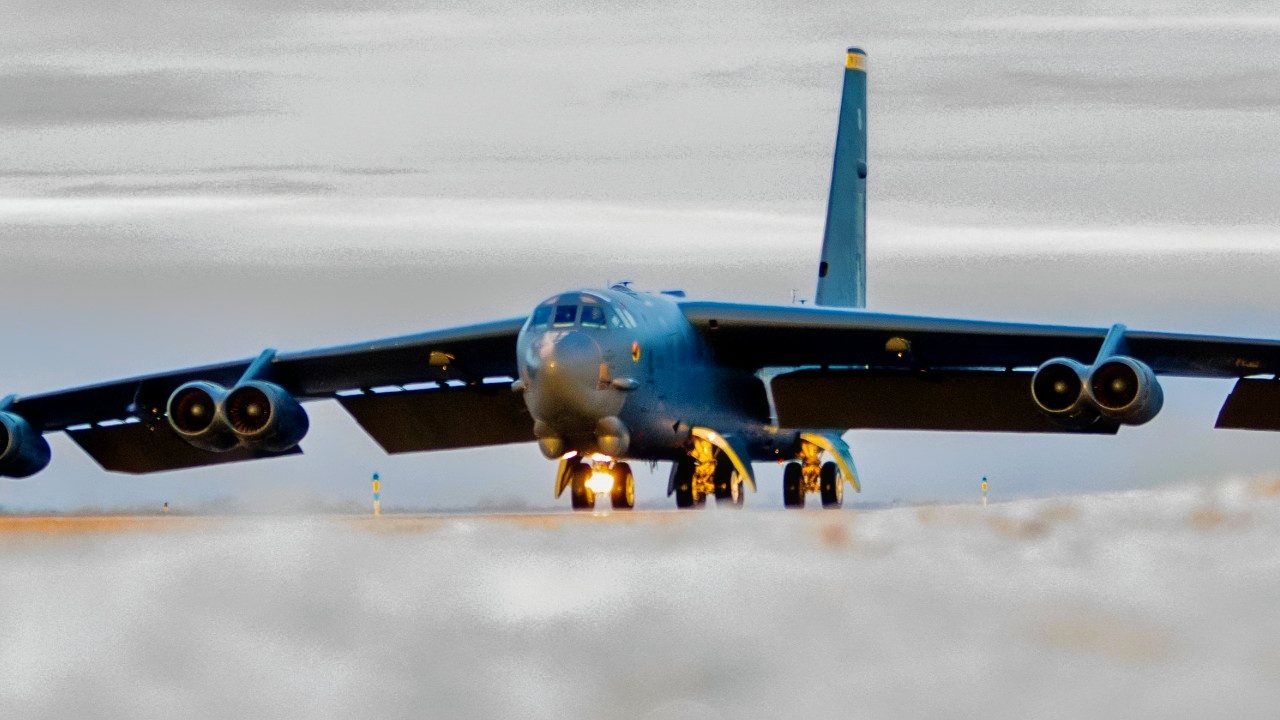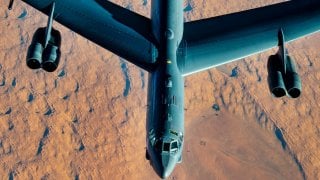The B-52J Has Just 1 Problem: It Won't Fly Anywhere Until 2033
The U.S. Air Force's legendary B-52 Stratofortress is getting a major upgrade with the B-52J variant, expected to reach initial operational capability in 2033.
What You Need to Know: The U.S. Air Force's legendary B-52 Stratofortress is getting a major upgrade with the B-52J variant, expected to reach initial operational capability in 2033. The upgraded bomber will feature advanced technologies, including new cockpit displays, landing struts, electrical power generation, and a cutting-edge radar system adapted from the F-15 and F/A-18.

-Designed to improve performance and maintainability, the B-52J will likely carry the hypersonic attack cruise missile (HACM) after the cancellation of the AGM-183 program.
-The modernized B-52J will be vital for U.S. strategic operations, potentially flying for 100 years, remaining a cornerstone of American airpower.
The B-52J Bomber Could Be Amazing...in 2033
The U.S. Air Force’s B-52J bomber is getting a facelift. For over seven decades, the legendary Stratofortress represented the pinnacle of bomber capability in the Air Force. While the platform is aging, the Air Force is not yet ready to retire it.
According to the service, the newest B-52J variant is expected to reach initial operational capability in 2033. The upgraded Stratofortress will feature a host of cutting-edge technologies, including enhanced cockpit displays, new landing struts and electrical power generation.
Introducing the B-52 Stratofortress:
When the B-52 first entered service at the start of the Cold War, it instantly became an iconic airframe. Capable of reaching high subsonic speeds at great altitudes, the bomber symbolized America’s deterrent strategy against the Soviets. Boeing was awarded the contract to construct the airframe and incorporated a range of unparalleled technologies at the time. The bomber was designed to perform close-air support, offensive counter-air and maritime operations, strategic attack operations and many more specialties.
Over the years, several B-52 variants were introduced in order for the platform to retain an edge over adversaries. The latest B-52H model remains in service. Equipped with a larger payload and longer range, this variant is superior to its predecessors in many ways. The B-52H is the Air Force’s primary strategic bomber and conventional platform. Perhaps the most significant addition featured by this variant is the CONECT combat network communications technology program. As detailed by Air Force Technology, the B-52 can carry AGM-84 Harpoon missiles, AGM-86A air-launched cruise missiles, Joint Direct Attack Munitions and other weapons. In total, the bomber has the capacity to lug more than 70,000 pounds of diverse ordnance.

What will make the B-52J stand out
When the B-52J enters service, it will feature even greater capabilities. Specifically, the bomber will be equipped with a new radar that combines the functions of those used on the Boeing F-15 and F/A-18 airframes. As explained by Air and Space Forces, “Together, the two systems must fit within the space vacated by removing the B-52’s APG-166 analog radar system, which suffers from poor reliability, obsolescence, and parts scarcity. The new radar is expected to deliver vastly improved performance, both in operations and maintainability, and in both the conventional and nuclear roles. The new system—still lacking a name—will provide targeting information as well as weather and navigation aids.”
Regarding armament power, the B-52J was initially expected to carry the hypersonic AGM-183 Air-Launched Rapid Response Weapon. However, the Air Force appears to be canceling this program and instead focusing on incorporating the hypersonic attack cruise missile (HACM) down the line.
The timely arrival of the B-52J variant will undoubtedly be instrumental to the U.S. if an all-out war with China unfolds shortly. Even though the platform has experienced several delays in recent years due to engine and radar changes, it remains a top priority for the service. The Stratofortress could fly for 100 years- an incredible feat for an iconic airframe.
About the Author: Maya Carlin, Defense Expert
Maya Carlin, National Security Writer with The National Interest, is an analyst with the Center for Security Policy and a former Anna Sobol Levy Fellow at IDC Herzliya in Israel. She has by-lines in many publications, including The National Interest, Jerusalem Post, and Times of Israel. You can follow her on Twitter: @MayaCarlin.
Image Credit: Creative Commons and/or Shutterstock.


